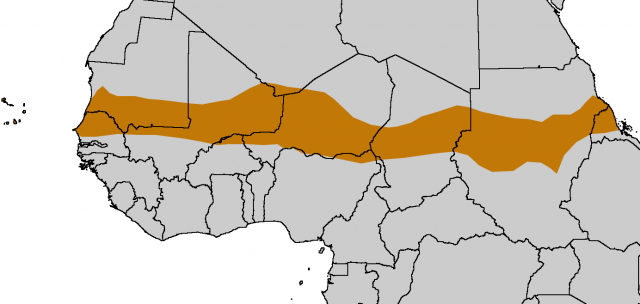Sahel
The Sahel is a narrow semi-desert region of western Africa. Its name comes from the Arabic word for “shore” or “border,” and it is the southern border of the SAHARA DESERT. The Sahel forms a zone of transition between the desert, which extends across the northern part of the continent, and the forests and grasslands of sub-Saharan Africa. Its dry, desert-like landscape is broken up by thorny trees, bushes, and plants, and during the rainy season grass covers much of the region.
The Sahel is defined by rainfall. It receives an average of 6 to 24 inches of rain a year, more than the desert but less than the savanna and forest regions farther south. The Sahel usually has a three- to five-month dry season, although in some years this season lasts much longer. From time to time droughts occur, leading to crop shortages and famine in Sahelian nations such as NIGER and Mali.
The boundaries of the Sahel are not fixed. In wet periods, Sahel vegetation moves northward into the Sahara. In dry periods, the Sahel reaches southward and consumes grassland through a process called desertification, in which land loses its fertility and becomes desert-like. Human activities, such as cutting trees for firewood and grazing livestock, are thought to be hastening desertification in parts of the Sahel. (See also Deserts and Drought.)
